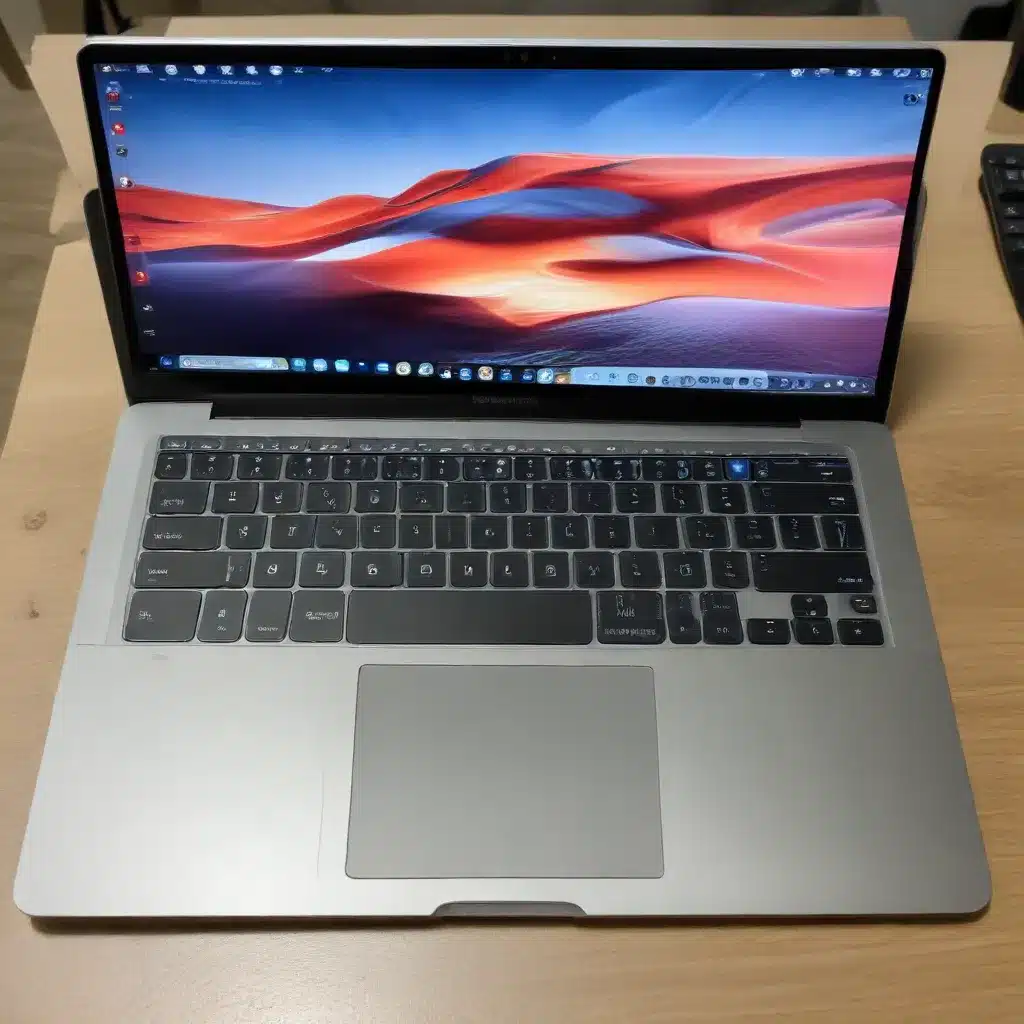
The Dual-Boot Dilemma: Balancing Needs and Capabilities
As an IT professional, I often encounter users grappling with the decision to dual-boot their laptops with Windows and macOS. The appeal of having access to both operating systems is undeniable, but the practical implications can be complex. Whether you’re a mechanical engineering student, a medical professional, or simply someone who requires specific software from both ecosystems, understanding the nuances of dual-booting can make all the difference.
In this comprehensive guide, we’ll explore the possibilities and challenges of setting up a dual-boot system, providing you with the insights and practical tips to make an informed decision.
The Case for Dual-Booting: Expanding Your Computing Horizons
The desire to dual-boot often stems from the need to access software or applications that are platform-specific. For instance, a mechanical engineering student may find that their CAD software and 3D rendering tools perform better on a Windows environment, while the macOS ecosystem offers a more seamless experience for tasks like creative work or document management.
Similarly, medical professionals, such as radiologists, may require specialized software for viewing and analyzing medical images, which may not have a native macOS version. In these scenarios, dual-booting can be a game-changer, allowing users to leverage the strengths of both operating systems.
Dual-Boot Options: Boot Camp vs. Virtual Machines
When it comes to dual-booting, there are primarily two approaches to consider: Boot Camp and virtual machines.
Boot Camp: Boot Camp is a utility built into macOS that allows users to create a Windows partition on their Mac’s internal storage. This option offers a native Windows experience, with direct access to hardware resources and the ability to run Windows applications without the overhead of a virtualization layer. However, it requires the user to reboot the system to switch between the two operating systems.
Virtual Machines: An alternative approach is to use a virtualization software like Parallels or VMware Fusion to run Windows within the macOS environment. This method allows users to switch between the two operating systems seamlessly, without the need for a reboot. Virtual machines can also be installed on an external drive, providing additional flexibility. However, the performance of virtual machines may be slightly lower than a native Boot Camp setup, and there may be compatibility issues with certain hardware-intensive applications.
Practical Considerations for Dual-Booting
When setting up a dual-boot system, there are several practical factors to consider:
Storage and Partition Management
One of the key considerations is how to manage the storage on your laptop. If you opt for Boot Camp, you’ll need to carefully plan the partition size for your Windows installation, ensuring you have enough space for your essential applications and data. Alternatively, using an external SSD for the Windows installation can provide additional flexibility, but it may impact performance compared to a native internal partition.
Performance and Resource Utilization
The performance of your dual-boot setup can vary depending on the specific hardware configuration of your laptop. Generally, a Boot Camp installation will offer better performance than a virtual machine, as it has direct access to the system’s resources. However, virtual machines can still be a viable option, especially for less resource-intensive tasks.
Compatibility and Software Availability
It’s crucial to research the compatibility of the software you plan to use on both the Windows and macOS platforms. Some applications may have native versions for both operating systems, while others may only be available for one. Understanding these limitations can help you make an informed decision about which dual-boot option is best suited to your needs.
Backup and Data Preservation
Regardless of the dual-boot approach you choose, it’s essential to have a robust backup strategy in place. This will ensure that your important data is protected in case of any system-related issues or unexpected events.
Exploring Alternative Solutions: Wine and CrossOver
While dual-booting remains a popular option, there are alternative solutions worth considering, particularly for those who want to avoid the overhead of a full Windows installation.
Wine: Wine (Wine Is Not an Emulator) is a free, open-source compatibility layer that allows users to run certain Windows applications on macOS or Linux systems without the need for a separate Windows installation. Wine provides a Windows-like environment, allowing users to run selected programs directly from their primary operating system.
CrossOver: CrossOver, a commercial product from CodeWeavers, is another solution that builds upon the Wine project. CrossOver offers a more user-friendly interface and provides a broader range of application compatibility, making it a viable option for those who need to run specific Windows software on their macOS devices.
These alternative solutions can be particularly useful for users who only require access to a few Windows-based applications and want to avoid the complexity of a full dual-boot setup.
Conclusion: Empowering Your Computing Experience
Dual-booting a laptop with Windows and macOS can be a powerful solution for users who require access to platform-specific software or applications. By understanding the pros and cons of the available options, you can make an informed decision that best aligns with your computing needs and preferences.
Whether you choose to go the Boot Camp route or explore virtualization solutions, the key is to carefully plan your setup, consider your storage and performance requirements, and maintain a robust backup strategy. Additionally, don’t overlook alternative solutions like Wine and CrossOver, which may provide a more streamlined approach for users with specific software requirements.
Ultimately, the choice of a dual-boot setup is a personal one, and the IT Fix team is here to guide you through the process, ensuring that you can fully leverage the capabilities of both Windows and macOS on your laptop.












